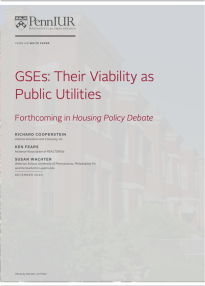Key Message
The proposed transformation of Fannie Mae and Freddie Mac into public utilities offers a pathway to ensure their continued support for the housing finance system while protecting taxpayers and maintaining market stability. Under a utility model, the GSEs would retain their mission to provide liquidity and support for underserved markets but would operate with regulated returns and capital requirements. This approach aims to prevent the risks associated with purely private entities competing for market share, which historically led to reduced underwriting standards and increased systemic risk.
The utility model would involve setting guarantee fees that reflect market risks while ensuring that the GSEs have sufficient capital buffers to withstand economic downturns. This model seeks to balance profitability with the public mission, enabling the GSEs to cross-subsidize affordable housing initiatives and maintain access to credit during crises. By regulating the GSEs as utilities, policymakers can ensure a stable, transparent, and equitable housing finance system that supports long-term economic growth and housing affordability.


